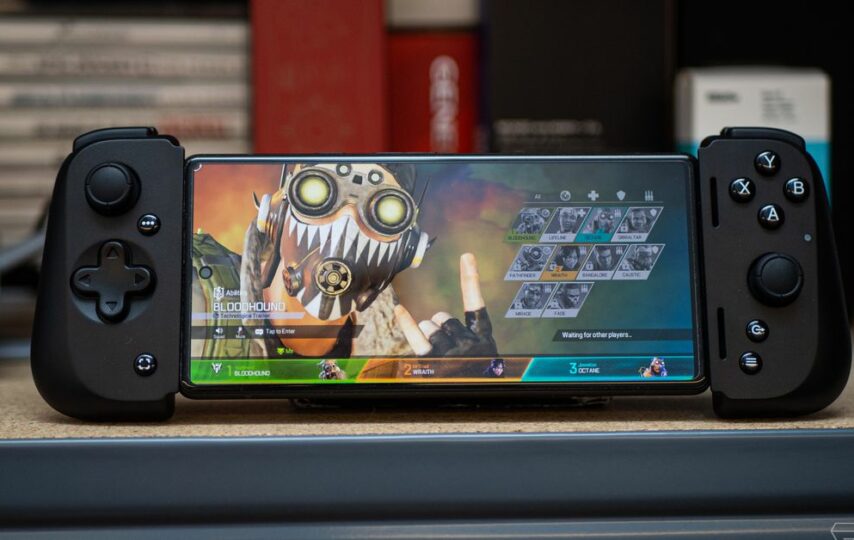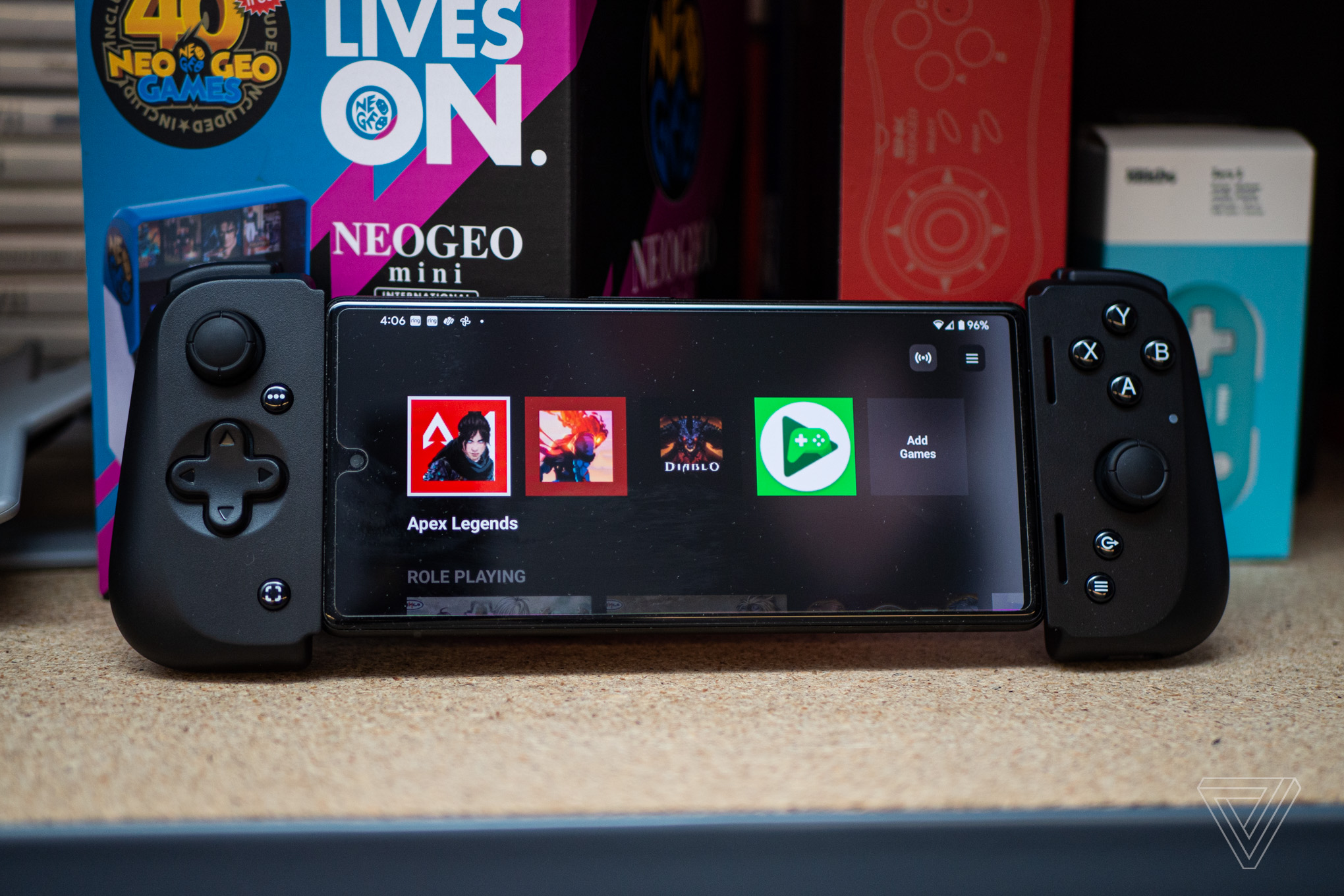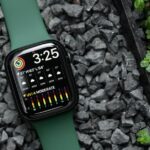[ad_1]
With the Kishi mobile controller that launched in mid-2020, Razer succeeded in turning phones into pseudo-Nintendo Switch consoles. It offered a clever design that sandwiched your phone in the middle of two controllers. Not to mention, it was a more comfortable, console-like way to play mobile games, as well as cloud streaming services, like xCloud, Stadia, and more. Now, with the $99 Kishi V2, it seems like Razer’s goal was to get a leg up on a competitor who did it all better on its first try: Backbone.
That one-hit wonder of a company swooped in after the Kishi launched with an even more formidable mobile controller for iPhone, the $99 Backbone One. It featured a simpler, cozier design, more functionality, and an interface that felt just shy of a full-blown console operating system. It turned gaming on the phone into a more fleshed-out experience, making the Kishi’s value proposition weaker and a lot less interesting by comparison.
So, with the Kishi V2, Razer decided to ditch its first-gen design for something very similar to the Backbone One. There isn’t much here that Razer can take much credit for. The V2 has a similarly minimalist design to the Backbone and the same kind of pull-to-extend bridge mechanism to let you slot your phone into its split controller arrangement. The in-game capture button is here on the left side, along with an options button on the right, and there’s a new button that takes you to — yes — Razer’s own spin on a gaming dashboard called Nexus. It’s not mandatory that you use it, but it’s there.
There are some key perks that the Kishi V2 has over Backbone’s controller. The big one is that the Kishi V2 is made for Android. There’s also an iOS version coming later in 2022. Backbone (frustratingly) hasn’t made a version of its controller with USB-C, unless you count that subscribers to its paid service can connect it to an Android device with a Lightning-to-USB-C cable. If you play mobile games with complex control schemes, Razer’s new model features two extra programmable shoulder buttons — one on each side. Those can be remapped within the Nexus app.
:no_upscale()/cdn.vox-cdn.com/uploads/chorus_asset/file/23663800/cfaulkner_220630_5324_0003.jpg)
And while Backbone’s design hit its limit with the iPhone 13 Pro Max’s giant camera bump (it offered free 3D-printed adapters to make it work), the Kishi V2 includes adjustable rubber inserts to broaden its compatibility with Android phones and their various camera bump dimensions — even those in thin cases. The full list of supported phones includes both Razer phones; Samsung’s Galaxy S8 through the S22; the Galaxy Note 8 through 20; Google Pixel 2 through 6; and “many other Android devices.” It supports up to 11.5mm-thick devices, including a camera bump — I was surprised that I had to take my Pixel 6 out of its thin (and yellowing) official Google case to make it fit.
:no_upscale()/cdn.vox-cdn.com/uploads/chorus_asset/file/23663801/cfaulkner_220630_5324_0004.jpg)
:no_upscale()/cdn.vox-cdn.com/uploads/chorus_asset/file/23663802/cfaulkner_220630_5324_0005.jpg)
Overall, the fit and finish of the Kishi V2 are fine, but its new features — both in the Nexus app and those physically present on the controller — are less comprehensive and polished than what’s available on Backbone’s One.
Within Nexus, which fails to launch with more than half of my button press attempts, you’ll see a barren dashboard that can serve as a game launcher for ones that you have installed. Scrolling down through the app reveals game suggestions per genre, which either highlights how much worse the game selection is on Android than on iOS or how lousy Razer is at curating them. As a game discovery tool, I’d say Nexus is maybe a little worse than just browsing on the Google Play Store, which is already a less than stellar experience.
In the app, you can begin a livestream through YouTube or Facebook Live. If you want to take a screenshot or a video, you can do that with a button dedicated to those functions on the left side. Though, there’s a dire lack of on-screen or haptic feedback throughout, especially with screen or video captures. For instance, after pressing the screenshot button or holding it to capture a video, I have no idea if the command was registered until I open my Google Photos library. A simple screen notification (a minuscule Cast icon appears in the Android notification toolbar during screen recording, but it’s easy to miss) or a subtle vibration could have done the trick. It’s the little stuff like that, which Backbone got right two years ago, that makes the Kishi V2 frustrating to use.
Razer switched its face buttons to the same kind of clicky, mechanical switches found in its Wolverine V2 controller. And while I liked them in the larger controller, I dislike how they feel here more than I expected to. The travel is shallow, and the click is so subtle and requires so little force that, if I’m hammering a button down during intense gameplay, it doesn’t provide enough feedback to let me know if I’ve made a press. It almost reminds me of using one of Apple’s dreaded butterfly keyboard switches with dust caught in it.
:no_upscale()/cdn.vox-cdn.com/uploads/chorus_asset/file/23663805/cfaulkner_220630_5324_0008.jpg)
:no_upscale()/cdn.vox-cdn.com/uploads/chorus_asset/file/23663804/cfaulkner_220630_5324_0007.jpg)
The Kishi V2 offers USB-C passthrough charging, so you can keep your phone charged by plugging a cable into the bottom right side of its grip, just like the previous version. I suppose that I may be in a minority of reviewers to make a stink about this, but I really wish Razer had built in a 3.5mm jack for wired listening. Audio lag is, sadly, still an area where Android is inexplicably behind Apple, and it’s mostly just odd of Razer to not include one, especially since Backbone does.
The Kishi V2 feels like a device that was made to prove that Razer won’t take it lying down in the gaming space from a newcomer. It took a surprisingly long time to release its rebuttal, which is fine. Forgetting about the Backbone One for a second, the Kishi V2’s improved design and thoughtful features make it one of the best plug-in-and-go mobile controllers for Android users. But in its current state, what little that makes the Kishi V2 unique doesn’t overshadow how much better Backbone’s first-gen product still is.
Photography by Cameron Faulkner / The Verge
[ad_2]










